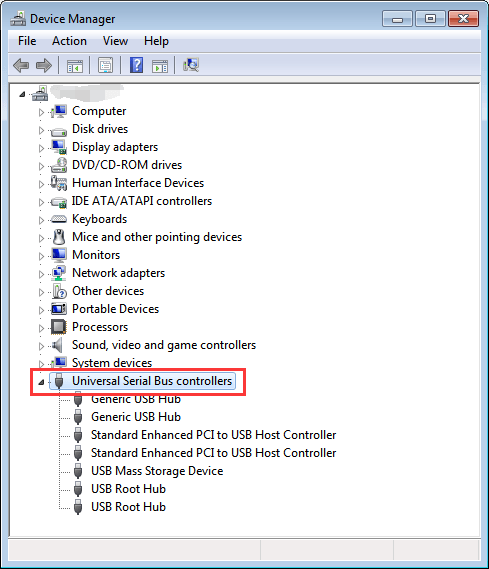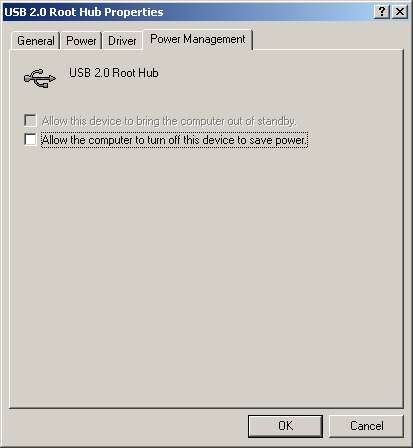Usb Hub Root Drivers For Mac
Posted : admin On 16.10.2019For anyone who has a problem with the LimeSDR Mini not working with OS-X, perhaps this might help:. When connecting my LimeSDR Mini to my mac, the FTDI controller on the LimeSDR was not registering at all - literally. The device was getting power, but the LEDs denoted a problem. Running the command: ioreg -p IOUSB, showed the following: ±o Root ±o AppleUSBXHCI Root Hub Simulation@14000000 ±o Bluetooth USB Host Controller@14300000 ±o Apple Internal Keyboard / Trackpad@14400000 This meant that the FTDI controller wasn’t even being recognized as a USB device on the Mac’s Root Hub. Clearly then, no software will work to connect to the LimeSDR Mini (it simply doesn’t exist to the OS). I then connect the LimeSDR Mini to a USB 3 or 2.0 Hub, then connect the Hub to my mac.
Usb Root Hub 3.0 Driver
The LimeSDR Mini got power. I run: ioreg -p IOUSB and get the following: ±o Root ±o AppleUSBXHCI Root Hub Simulation@14000000 ±o Bluetooth USB Host Controller@14300000 ±o Apple Internal Keyboard / Trackpad@14400000 ±o USB3.0 Hub @14500000 ±o USB2.0 Hub @14100000 ±o LimeSDR Mini@14130000. The SDR software now works - I can even run HDSDR in a Parallels Windows VM and use the LimeSDR Mini. So if you have the same problem that I did with your mac - that the device isn’t even being recognized by the machine, then please give the USB Hub trick a try.

It seems us Mac OSX users are in the distinct minority here. I received my LimeSDR Mini back in July and while it appears to function pretty well, it has this problem where on the first run (osmocomfft -s 10e6 -a driver=“driver=lime,soapy=0”) everything works as expected but on the second run the Mini is still detected but receives no samples. This essentially forces me to continually unplug and plug each time I run a program. I’ve also had an issue where usb 3.0 operation is very noisy until I wrap my hand the board (shielding, grounding?).
Oddly, USB 2.0 mode seems to not have this problem. Have you had any of these problems?

I have a new (May 2017) desktop PC running latest Windows 10 vn1703 with 2 USB 3.0 ports on the front and 4 USB 2.0 ports on the back. Device Manager only lists USB 3.0, i.e.
Download the latest driver, firmware, and software for your USB 2.0 4-Port Hub.This is HP's official website to download drivers free of cost for your HP Computing and Printing products for Windows and Mac operating system.
This is the #1 app for syncing Gmail contacts with Mac both in terms of downloads & reviews.  This app distinguishes itself with its reliability, ease of use, speed, and with a true “2-way sync” that merges changes made to both your Gmail & Mac contacts. With ”Contacts Sync for Google Gmail,” you can quickly & easily sync your Gmail & Mac contacts so that you can have access to your contacts wherever you go.
This app distinguishes itself with its reliability, ease of use, speed, and with a true “2-way sync” that merges changes made to both your Gmail & Mac contacts. With ”Contacts Sync for Google Gmail,” you can quickly & easily sync your Gmail & Mac contacts so that you can have access to your contacts wherever you go.
One 'USB 3.0 eXtensible host controller' and one 'USB Root Hub (3.0)'. Should there be any controller or root hub for USB 2.0?? I have read that USB 2.0/3.0 should be upwards and downwards compatible and yes, the keyboard, mouse and various memory sticks work in all the ports. However I have a USB 2.0 device (a Satmap) which will not work on this machine in any of the ports. It works fine on an older machine that has only USB 2.0 ports (and therefore controllers) running Windows 10 vn1607. On the new machine, Device Manager knows the Satmap is connected (lists as USB Mass Storage Device under USB controllers, as USB Device under Disk Drives and also under Portable Devices) but nothing else can 'see' it - neither File Explorer nor the Satmap application software.
Running Troubleshooter (when it is already plugged in to a USB 2.0 port) just returns the message 'USB Mass Storage Device can't work properly with USB 3.0. If the USB 2.0 device is incompatible with USB 3.0, plugging it into a USB 2.0 port can solve the problem.'
Having read through various USB threads, I have tried uninstalling everything under USB controllers but that made no difference. Any thoughts on what to try next will be gratefully received. Computer Type: PC/Desktop System Manufacturer/Model Number: Custom Self-build OS: 64bit Win 10 Pro ver 1809 Build 17763.168 and W10 Insider Build 18290 CPU: Intel Core i5 3570K 3.4GHz Motherboard: ASUS P8Z77-V LX Memory: 8GB Graphics Card: On-board Intel HD Graphics 4000 Sound Card: On-board Realtek HD Audio Monitor(s) Displays: Samsung 226BW Screen Resolution: 1680 x 1050 Keyboard: Microsoft wired Keyboard 600 Mouse: Microsoft wired Basic Optical PSU: Corsair TX550 Case: Gigabyte IF233 Hard Drives: 1TB HDD Browser: MS Edge Antivirus: Windows Defender. I have read that USB 2.0/3.0 should be upwards and downwards compatible and yes, the keyboard, mouse and various memory sticks work in all the ports.
Most USB 3.0 ports will work with USB 2.0 devices but shouldn't the other way around. Older hardware is seldom forward compatible with new hardware.
My latest computer shows a Generic USB Hub for the USB 2.0 ports on the back and a USB Root Hub (USB 3.0) for the rear and front USB 3.0 ports. USB 3.0 software should be included with the computer, USB 2.0 is usually supported in the BIOS for use by the keyboard during bootup. Computer Type: PC/Desktop System Manufacturer/Model Number: 2-Custom Computers, ASUS Desktop, Dell Inspiron 580 Desktop + Dell Inspiron 15R Notebooks 2 + more OS: Win10 Home and Pro, Win10 Insider Preview, WinXP Home Premium, Linux Mint CPU: AMD and Intel Motherboard: ASUS, GigaByte, others Memory: 16GB in ASUS, max.
4GB or 8GB in all others Graphics Card: AMD ATI Radeon or Onboard, ASUS with nVidia GT-710 Sound Card: Onboard Monitor(s) Displays: HP 21.5' Touchscreen, ASUS 27' 4-input Screen Resolution: Usually 1440x900 Mouse: Microsoft Optical Mouse, Wireless and Bluetooth mice with Notebooks Hard Drives: Various internal HDDs and USB HDDs plus 2 x 2TB NAS drives connected to Router. Internet Speed: 5Mbps Browser: Internet Explorer 11, Firefox and SeaMonkey, Edge when absolutely necessary Antivirus: Windows Defender Other Info: Also running Linux Mint on a Desktop and a Notebook. HP Laserjet and HP Officejet printers connected to Router. Computer Type: PC/Desktop System Manufacturer/Model Number: Custom Built OS: Win 10 RS5 64 Bit CPU: Intel i7 960 @3.20 Ghz Motherboard: MSI-58x-E Memory: 24Gb Corsair Graphics Card: EVGA GTX 1060 6 GB Sound Card: on board Monitor(s) Displays: LG Flatron E2341 23 Inch Screen Resolution: 1920 x1080 Keyboard: Razer ORNATA Mouse: Razer Basilisk PSU: 850 Wattt Case: Haf 912 Cooling: Corsair H75 Hard Drives: Two-1TB Samsung SSD EVO's Internet Speed: 350 down 50 up Browser: Firefox 64 BETA Antivirus: Windows Defender Other Info: Plain stereo sound system with Cyberpower CP1350AVRLCD -UPS. Computer Type: Laptop System Manufacturer/Model Number: HP Envy 17 OS: Win10 Home x64 - 1809 CPU: Intel Core i7 4710HQ @ 2.50GHz Motherboard: Hewlett-Packard 2291 (U3E1) Memory: 12.0GB Dual-Channel DDR3 @ 798MHz (11-11-11-28) Graphics Card: Intel HD Graphics 4600 (HP) Sound Card: Realtek High Definition Audio Screen Resolution: 1600 x 900 Mouse: Logitech MX510 Hard Drives: Samsung SSD 860 EVO 250GB (SSD) / Western Digital Black 1TB (SATA) Internet Speed: 10 / 200 Browser: FireFox Antivirus: Windows Defender / Malwarebytes 3.0. Here's a screenshot of my Device Manager and USB: As I mentioned I have added a USB 3.0 card to get more ports. If the software isn't contained within Windows you should have gotten a CD from the manufacturer of the motherboard or the vendor of the computer to install the drivers.
USB 2.0 may not be shown in the BIOS as such, may be Legacy USB with is needed to allow a USB keyboard necessary to make changes. Have seen older computers need a PS/2-attached keyboard to make changes before a USB keyboard can be used. Haven't seen a computer yet that has BIOS support for USB 3.0, usually gets that when the Operating System is installed and drivers installed.
Here is a screenshot of my Insider Preview computer, USB2.0 only. Computer Type: PC/Desktop System Manufacturer/Model Number: 2-Custom Computers, ASUS Desktop, Dell Inspiron 580 Desktop + Dell Inspiron 15R Notebooks 2 + more OS: Win10 Home and Pro, Win10 Insider Preview, WinXP Home Premium, Linux Mint CPU: AMD and Intel Motherboard: ASUS, GigaByte, others Memory: 16GB in ASUS, max. 4GB or 8GB in all others Graphics Card: AMD ATI Radeon or Onboard, ASUS with nVidia GT-710 Sound Card: Onboard Monitor(s) Displays: HP 21.5' Touchscreen, ASUS 27' 4-input Screen Resolution: Usually 1440x900 Mouse: Microsoft Optical Mouse, Wireless and Bluetooth mice with Notebooks Hard Drives: Various internal HDDs and USB HDDs plus 2 x 2TB NAS drives connected to Router. Internet Speed: 5Mbps Browser: Internet Explorer 11, Firefox and SeaMonkey, Edge when absolutely necessary Antivirus: Windows Defender Other Info: Also running Linux Mint on a Desktop and a Notebook. HP Laserjet and HP Officejet printers connected to Router.